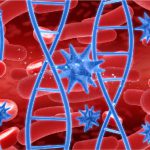Blood cancer is a disorder that affects the blood and the bone marrow. In majority of the cases, the development of red blood cells is restricted while in cancer there is an uncontrolled division of cells, These cancer cells interrupt the functioning of the normal cells and the cells cannot defend against foreign bodies or form a clot to stop bleeding. Immediately after the patient recognizes the symptoms, an attempt for earlier diagnosis needs to be made. Depending upon the different stages of blood cancer, age and tolerance levels of the patient towards the treatment and side effects, the oncologist has to decide the treatment.

A few most common symptoms that can be observed easily are:
- Anemia: When the red blood cells in a person’s body do not function normally or there is a decrease in the count of blood cells, it manifests as anemia. Anemia leads to shortness of breath, dizziness, chest pain, pale skin and feeling weak.
- Poor clotting: A decrease in the platelet count can lead to poor clotting, as platelet cells help in clotting wounds. This can lead to unusual bruising, bleeding gums and heavy periods.
- Infections: Frequent repetition of infections also should not be ignored. This repetition depicts the weakening of the white blood cells.
If any of these symptoms are observed, consulting a doctor immediately is advised.
The doctor may then examine your health condition for a few days and then suggest tests to determine if it’s cancer or not.
The most common tests used to diagnose blood cancer are:
Complete blood count:
This blood test measures the concentration of various types of blood cells-red blood cells, white blood cells and platelet cell count, in the given sample. Any abnormalities in the blood cells or their concentration can be determined using this test. Bone marrow biopsy may help in confirming this diagnosis.
1. White blood cells: These cells protect the body from dangerous foreign bodies, virus and infections, that could harm the body. Higher or lower white blood cell count than the normal value may imply that the person has blood cancer.
2. Red blood cells: These cells carry oxygen throughout the body and decrease in the count of RBCs or the content of hemoglobin (the red pigment in RBC) is called anemia. This can happen not just in case of blood cancer though, some anticancer treatments like chemotherapy and radiotherapy can cause a decrease in the red blood cell count. Post blood loss during any surgery or treatment is generally followed by blood transfusion.
3. Platelets: Platelets help in blood clotting. Blood cancer or other cancers that have spread to the bone marrow lead to a decrease in the platelet count. Anticancer treatments can also lead to a decrease in the concentration of the platelets. In case of severe loss of platelets, platelet transfusion may be required.
Bone marrow biopsy/aspiration:
Removal of bone marrow sample for testing is called bone marrow biopsy or aspiration, the difference being the follows:
- Bone marrow aspiration: Extracting a liquid bone marrow sample.
- Bone marrow biopsy: Removing a small amount of bone marrow tissue.
It is used to determine if the cancer is affecting the bone marrow, the type of blood cancer, the stage or severity of the disease. Changes in blood cells that are not detected in complete blood count can be detected using this test.
Both the tests are performed at the same time under medical surveillance. The main purpose of this test is to confirm blood cancers and bone marrow disorders, detect any DNA abnormalities in the sample. Post anticancer treatments, this is used to check the progress of the treatment and evaluate the patient’s tolerance.
Lymph Node biopsy:
Blood cancer affects the blood cells which in turn means that the immune system completely gets affected. The lymphatic system is responsible for the human immunity. It includes tonsils, spleen and lymph nodes. The lymph nodes are present in hundreds in the body which contain white blood cells to fight infections.
In lymph node biopsy, a small cut is made and the node is taken, and the cut is closed by stitches. This gives information about the blood cancer, its type, stage and spreading.
Spinal tap:
It is also referred as lumbar puncture. A fine needle is inserted in the space between between the bones in the lower back and cerebrospinal fluid is extracted from the spine. This fluid is examined under a microscope to see if the blood cancer has spread to the spinal cord.
Flow cytometry:
This test determines the blood and bone marrow cells to analyze a change in the white blood cell count that could cause cancer. An instrument known as flow cytometer is used to measure the number and percentage of cells and their characteristics. This test also helps to detect the residual levels of cancer post treatment. The results are also useful for measuring the amount of DNA in the blood cells.
Karyotype test
This test maps the 46 human chromosomes of a cell to determine the changes in the chromosomes and their arrangement. G-banding is the method used for this test. A stain called Giemsa is used to make the banding pattern of chromosome pairs easier to see. This test looks for abnormalities in the size, shape, number and arrangement of the blood cells or bone marrow cells. This test can help the doctor prescribe the medications and plan the treatment.



